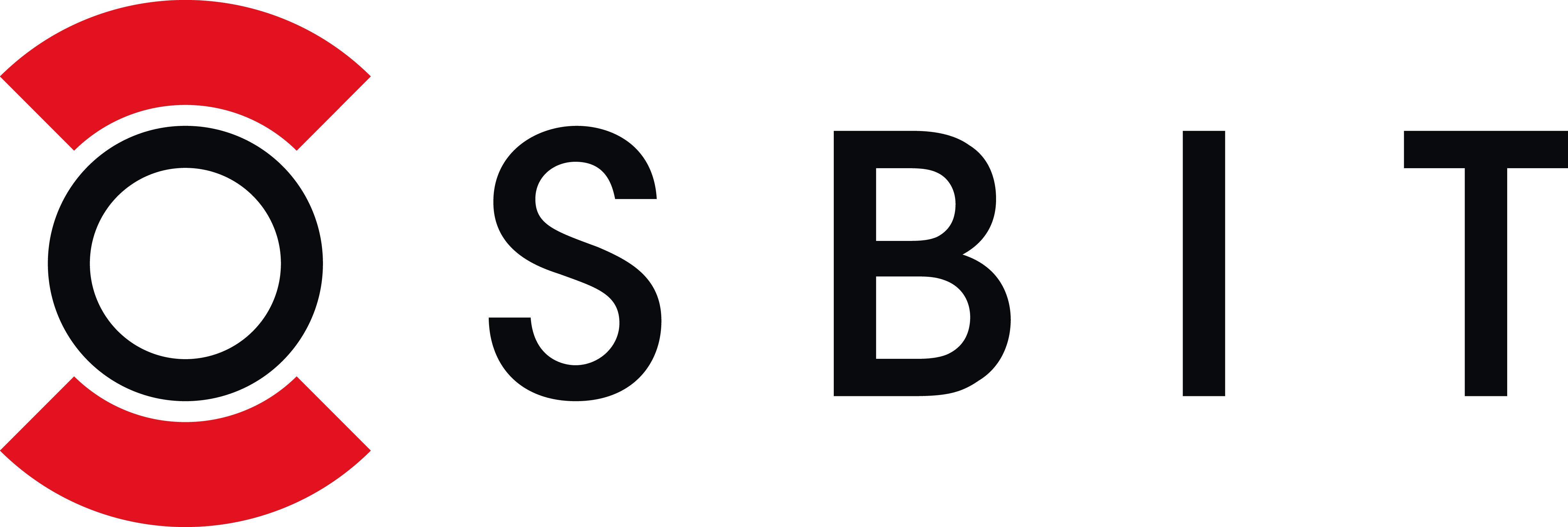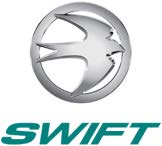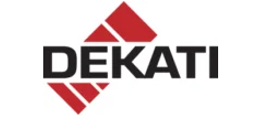
Swift Group (leisure vehicles) optimises its digital assets, with Visualisation

Meet Swift Group
Founded in 1964, Swift Group Ltd (Swift) is the UK's largest manufacturer of touring caravans, motorhomes and holiday homes. It produces over 100 different models across its three product ranges.
With a 100-acre manufacturing site in Cottingham, East Yorkshire, and depots in Manchester and Edinburgh, the company has a turnover of >£300m, and a workforce of over 1,300. Swift works with 180 supply partners of specialist components (such as core chassis – from Fiat and Ford -- to interior features such as heating systems, ovens, and windows, through to the finishing touches such as mattresses and upholstery).
Swift adheres to environmentally friendly methods of production to minimise environmental impact. It seeks the same level of responsibility from its supply chain partners.
“At Swift, we’re always exploring more advanced and more effective ways of harnessing digital design assets and to use them to their fullest, through visualisation technologies.
We’ve gained direction by keeping a close watch on how such approaches benefit the automotive industry, where the use of digital prototyping, and visualisation as a marketing tool,
has reached a high level of sophistication. We’re leading the field in our own sector – the leisure industry – by aligning our design approach to technologies that go beyond 3D into close-to-life representation of products:
both as the design evolves, and in sales and marketing activities. Along the whole path of this evolution, we’ve had the support and guidance from Symetri visualisation consultants – with deep knowledge of developments within automotive –
that has helped grow our team’s expertise
at exactly the right pace to meet our growth, our range expansion, and our customers’ expectations”.
- Chris Milburn, Chief Design Officer at Swift Group Ltd
Going Beyond 3D
Chris Milburn is Swift’s Chief Design Officer. Before joining Swift 20 years ago, his track record included stints as Chief Designer at the Daewoo Motor Company and TWR.
Chris has considerable experience in design approaches, characterising the car world’s ability to develop style designs aligned to customer lifestyles and to adopt design solutions that make such approaches possible.
“I’ve always been keen to champion these innovations at Swift. They bring benefits not just to design teams but onward through to production where they enable unequivocal clarity between design intention and the production processes necessary to realise it”, says Chris. “They also bring the ability to sales and marketing people to communicate Swift’s vehicles in a truly engaging way to dealers and, ultimately, through the Swift website”.
The ‘approaches’ referred to are summed up as Visualisation, itself summed as going far beyond 3D visuals to deliver imagery, based on exactly such digital assets, that comes as close to reality as possible: animated, 360°-rotatable walkarounds of both interior and exterior views.
Delivering the complete product experience with Visualisation
“My early moves into Visualisation in its broadest sense involved using Autodesk Alias primarily for layouts and the onward creation of digital designs before rendering out in Showcase. At that time at Swift, we focused on AutoCAD at the design stage, using Alias primarily for the surfacing of GRP parts and 3D-moulded components.
It was becoming apparent to Chris and his team that Swift could significantly enhance its design approach. By exploring the best ways of using digital assets as an integral element of the design process, Swift achieved a step-change in its marketing efforts, productivity, and control over costs.
“We felt we needed to expand our portfolio of design software solutions as our product range expanded. We knew we could add a further dimension to enhance stakeholder engagement with our products.
Our overriding goal is always to convey how Swift delivers on customer requirements and desires and offers extensive interior configuration choices. We already generated the fundamental digital assets – by virtue of our 3D design processes – so we needed to find the best way of optimising their potential flexibility to enable us to communicate the reality of the experience we offered as realistically as possible. We wanted to invite people aboard the vehicles before encountering a physical vehicle.
Symetri’s input has been of great value as we’ve progressed through the visualisation journey. They understand the latest technologies, the trends, the many choices available of both software and hardware and the path to take us quickly from where we were to where we needed to be”.
Symetri recommended to Chris and his team that Autodesk’s VRED™ was not only the natural successor to Showcase but would offer better image resolution for compelling product presentations. Alongside this, Autodesk 3ds Max® Software would enable designers to model, animate and render detailed photorealistic designs as the essential preparation stage for moving to animation in VRED.
“Adopting these two solutions enabled us to create sophisticated interior and exterior packages,” says Chris. “Along the way, working at this level of animated presentation has upskilled our designers”.
Closer to customers, regardless of distance
When COVID changed the world, widespread reassessments of how the commercial world communicated were triggered, not least due to the many restrictions to previous traditional working practices. They had to be radically and rapidly realigned to dispersed workforces, online collaboration, and the impossibility of doing business face-to-face.
Swift’s progress in bringing Visualisation into the heart of its approach to design had put the company in a solid position to adapt to new ways of working, as Chris explains:
“Prior to Visualisation, we had to rely on physical prototypes for photography. We also had to take physical vehicles to major trade shows at great expense and with the environmental impact of transportation.
These old ways changed almost overnight, and several years later on, they have remained changed forever. For the better.”
Visualisation has changed so much about so many design approaches at Swift.
Chris summarises the benefits as follows:
- Earlier design insights
With visualised product presentation, possible at early design stages, Chris feels that people gain a more in-depth understanding of design intention and how a vehicle will end up looking. Senior management and directors can appreciate more by seeing the end product before it actually is one:
“We now have more robust discussions about design direction. Previous barriers to communication between designers and stakeholders are removed with Visualisation. Everybody can speak the same language. Everybody can make a valuable contribution. We get better checks and balances.
Put simply, internal communication is better with Visualised digital assets. We now also involve key dealers in this process. Closer and earlier engagement with our trade customers goes a long way to improving sales potential”, says Chris. “What’s more, we can do all this in real-time just by sharing visualised, animated designs through the internet”.
- Enriched design quality
If Visualisation has been a step-change for Swift, the same has also been true for its designers, a team that comprises 20 people on the Advanced Design team and 50 directly involved in Design and Development:
“Visualisation has been a tremendous catalyst of deeper creative thinking. It opens up the imagination”, says Chris. “As much as anybody else, when designers see an almost real-life view of an interior, they can imagine more about what it will be like for customers to be in one of our vehicles. This leads to exquisite levels of detail in expressing the customer experience. An example would be the simple inclusion of everyday items such as an iPhone charging on an interior table or a convenient place for the kettle in a kitchen; suddenly, customers can feel “That’s me. I can see myself there”.
Chris says that as this way of thinking has grown, Swift has been able to build a “sophisticated portfolio or props and environments for the posing of vehicles in gorgeous settings, and with interiors that strike a strong note of recognition among customers about how they would intend to use the vehicle. So, our props portfolio includes ornaments, personal accessories, the stuff of everyday life”.
- Demonstrating tech sophistication attracts and retains talent
“When a company is seen to be driving the boundaries of technology, it attracts high calibre design people and keeps them – their aspirations are satisfied,” says Chris.
“This is vital for us at Swift, given the size of our design team and the speed at which we innovate. Joining the Swift team has become just as attractive a prospect for designers as is entering into the auto industry”.
- Reduced physical prototype requirements
In late 2020, Swift launched its first digital show, a proof point for its Visualisation strategy. The need to create physical prototypes for showing was eliminated. This move reduced a wide range of costs, from the making of the vehicle to the many travel and transportation costs associated with show attendance:
“Going ‘visual’ with presentations to the trade has also brought environmental benefits in that we have significantly reduced the need to travel across the country with huge vehicle transporters”, says Chris.
- Faster time to market
On Swift’s website today, all 360° views are digital, as are most flat images. Swift can move quickly from concept to marketing and sales.
Dealers see the proposed concepts earlier, and the result is that Swift goes to market more agilely than it would ever have been able to do proper visualisation.
Where to look next
“This has been, and will continue to be, a progressive journey over several years for Swift, as we’ve advanced through growing levels of maturity both in our design capabilities and the software that supports them”, says Chris.
We have already explored full Virtual Reality and Augmented Reality and will be seeking more guidance from Symetri. We value their recommendations and trust their panoramic vision of where to go next. The journey’s ongoing, and we’re delighted to have such experts as our guides”.
Related Cases


Dekati Relies on Sovelia PLM for a Seamless and Smoother Flow of Information from Design to Production
Meet Dekati Ltd They have been a world leader in designing and manufacturing innovative fine particle measurement solutions for 30 years. They provide measurement instruments and complete measurement solutions to various environments and sample co... Learn more



